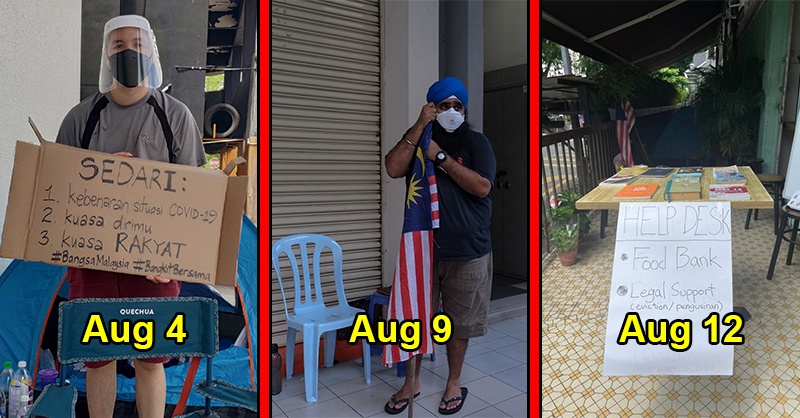TTDI residents are protesting against a new development, but do they actually have the rights?

- 1.1KShares
- Facebook950
- Twitter8
- LinkedIn1
- Email30
- WhatsApp110
Bukit Kiara may be just another hill for an ordinary Malaysian, but for the Taman Tun Dr Ismail residents (and for many more outside of TTDI, actually), it’s a beloved safe haven to escape to without having to travel far. Equivalent to the size of 300 football fields, this vast space of lush greenery in the middle of an urban area is a favourite for families, hikers, joggers, cyclists, fitness enthusiasts and more. BTW, did chu guys also know that Bukit Kiara actually functions as a green lung in Kuala Lumpur?!
So imagine their horror when DBKL announced a new development order near Taman Rimba Kiara. The residents of TTDI have been protesting a high-rise development project since June last year, even calling for the park to be gazetted as a public space to prevent development from taking place. Unfortunately, it didn’t work out. In fact, the issue’s even bigger now – there’s a new proposal to build serviced apartments and affordable homes to relocate longhouse residents!
While the TTDI peeps agree with the affordable housing project for the longhouse residents who have been waiting for it since the 1970s, they are opposing the development of serviced apartments. So before we raise our pitchforks and join in the protest, let’s try to understand how the law works in relation to this issue first …
Wait, who actually owns Bukit Kiara?
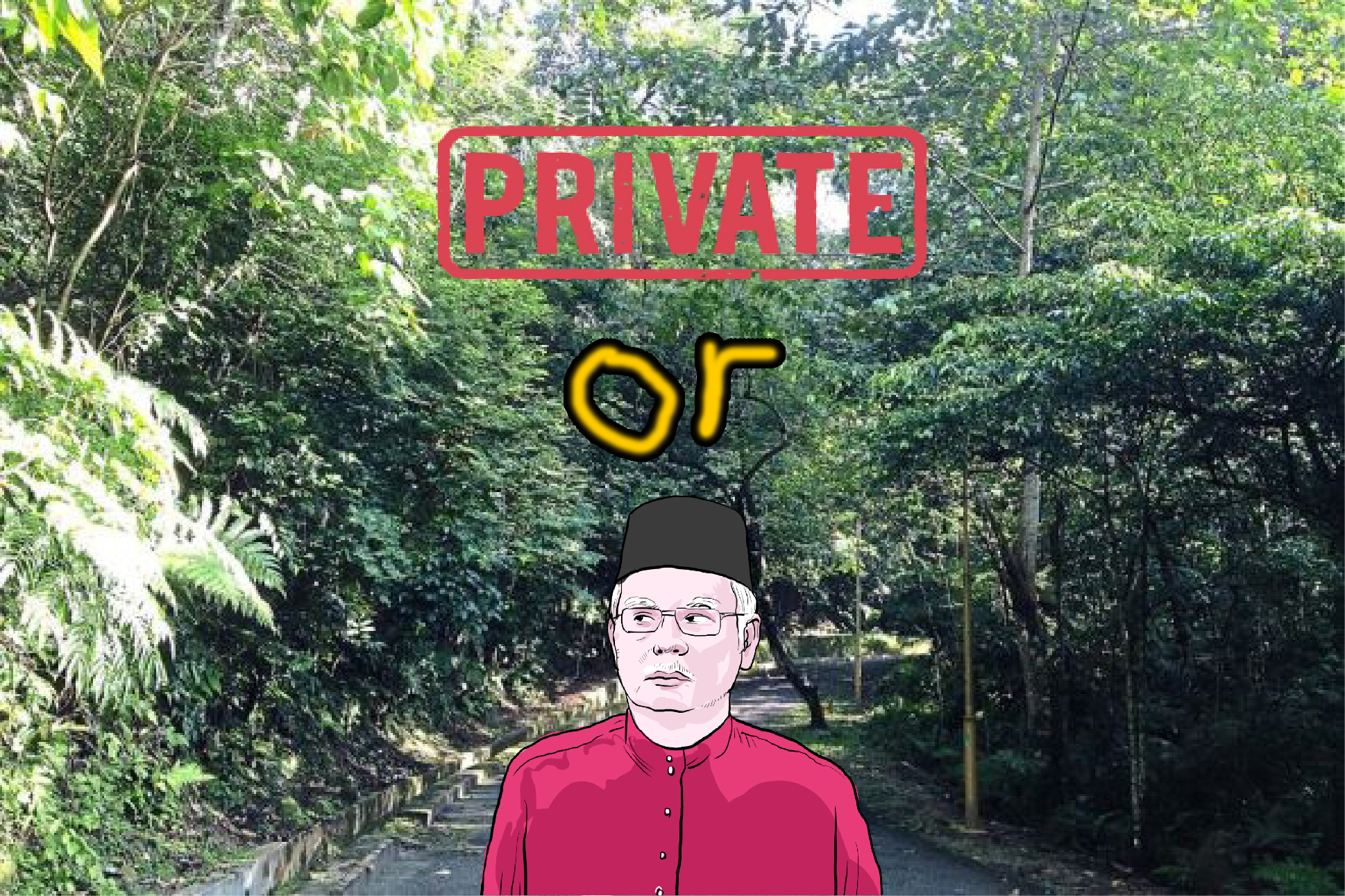
A long, long time ago (is 40 years considered long?), Bukit Kiara used to be a privately-owned rubber estate plantation by Semantan Estate, which was further owned by the Eng Lian Group and Ng Chin Siu & Sons Rubber Estates Sdn Bhd (wow, dat ownception).
According to an article from The Star, Bukit Kiara was actually supposed to be Kuala Lumpur’s National Botanical Gardens. Sadly, the project was aborted because the gomen thought that a botanical garden wasn’t really important. A source who was involved in the project believed that the gomen wasn’t that serious about the gardens, after all. In fact, they were just unsure of what to do with the land after purchasing it in 1980. They ended up selling portions of it again to developers over time.
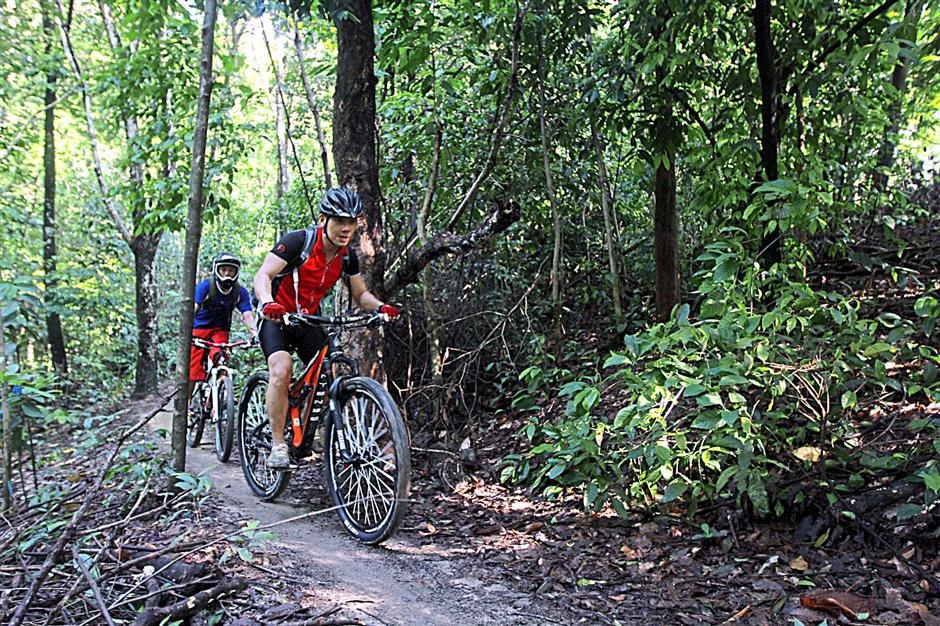
Wait, can the gomen actually buy private lands and public spaces? According to our friend from AskLegal, yes they can, but not suka hati la obviously. Just to get an understanding first, they own all lands by default anyway. This means that they have the authority to dispose (including sell) the land to private parties. If the gomen abandons the land as a freehold land, it then becomes privately-owned. If they leave the land as a leasehold land, the land will then still belong to the them.
BUT, if the land is privately-owned, the state authority aka the gomen can acquire the land for public purposes or if they feel that it would be beneficial to the economic development of the country. Lands could also be acquired for mining, residential, agricultural, commercial, industrial or recreational purposes under the Land Acquisition Act 1960.
Actually it doesn’t matter who owns the land… residents will always have the right to protest
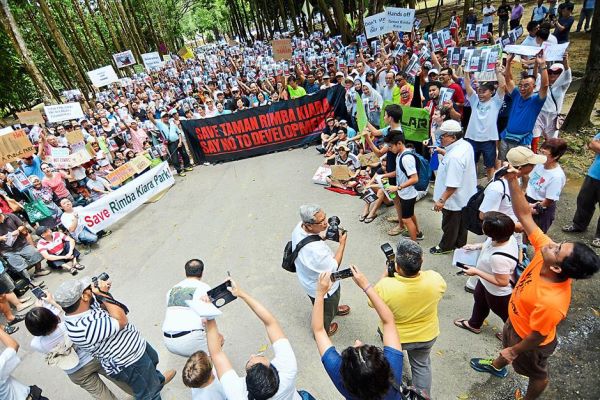
Under Rule 5 of the Federal Territory Planning Act 1982, people who are affected by the development are allowed to submit their objections to DBKL. How? By getting the mayor to review objections to the application for development that involves the conversion of land use, zoning or increase in residential density. That’s exactly what the TTDI protesters did, and even with 5,000 signatures in the petition, 2 mass protests in June and August 2016, and several letters to KL mayor Datuk Seri Mohd Amin Nordin Abd Aziz, their pleas were ignored.
The residents fear that the development would affect the social and environmental impact in TTDI in the long run. The 8 blocks of serviced apartments ranging from 42 to 54-storeys with 1,766 units will definitely result in an increased population and congestion. Residents Association (RA) chairman Abdul Hafiz Abu Bakar is worried that this will hamper any more chance of public spaces, parking lots, better traffic control and parking amenities. The ideal situation would be for the developers to proceed with the affordable housing project without the serviced apartments, but the mayor said that it needs to have commercial value for the developers to earn profits.
“Although DBKL claims to be adhering to the so-called Rule 5, it’s now quite obvious that the stipulation is superficial and a deceptive process to proceed with the Development Order. We are only asking that Taman Rimba Kiara remain an open space. It has been earmarked to be gazetted as a public park.” – Abdul Hafiz Abu Bakar, TTDI RA chairman
If there’s one thing urban Klang Valley needs, it’s green space

A green space (also known as a green lung) is more than just your friendly neighbourhood playground. It’s a natural, undeveloped land within an urban area which has been specially set aside for the purpose of creating a balance between development and environmental conservation.
In a city choke-full of buildings, green spaces are especially important to control pollution and preserve our wildlife. In return, it provides a platform for us to lead a healthier lifestyle. As someone who looks forward to sleeping in during the weekends and would marry my bed if I can, even I can tell you that waking up to hike feels pretty darn great.
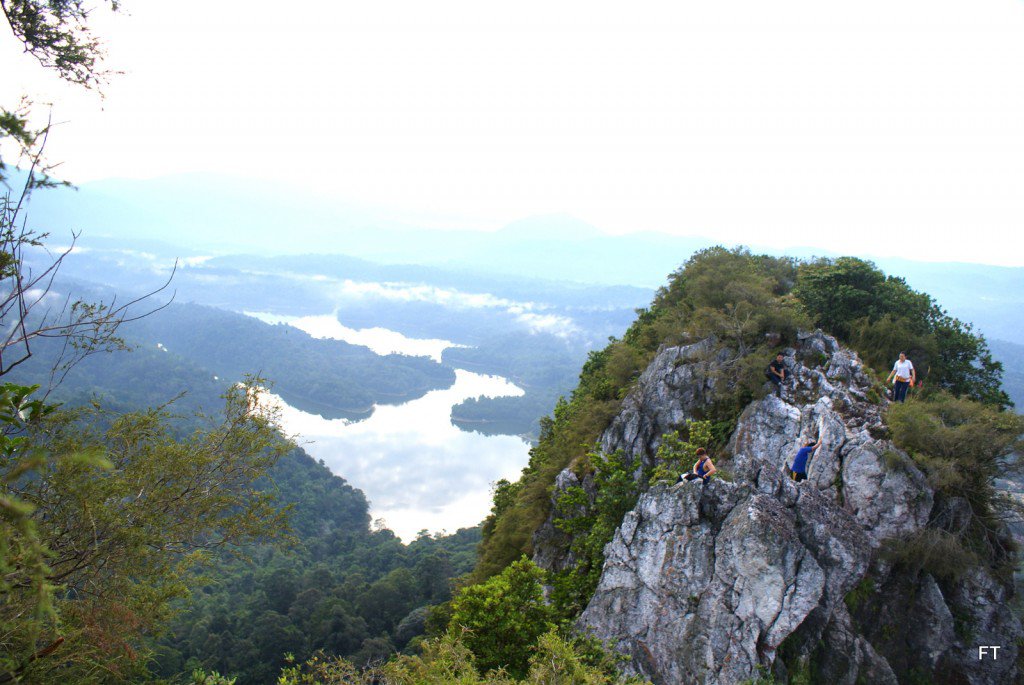
Cynthia Nikitin, senior vice-president of Project for Public Spaces (PPS) pushes further than just creating a green space. In an article from The Malay Mail Online, she believes that cities need to be designed for the people and by the people who live there, instead of just developing and building for profit. This is called the placemaking approach and she highly recommends it if we want Kuala Lumpur to be a great city. To start off, a great city needs to have great public spaces to create a habitable and inclusive society.
“Placemaking is about crowd-sourcing info in the beginning. It’s about asking people in the place, in the community, in the city—what do they want to see, what are their goals, what is their vision for the city, what is their vision for that public space, taking that input and designing to meet the needs and vision of the community,” – Cynthia Nikitin, senior vice-president of Project for Public Spaces (PPS), The Malay Mail Online
Also, are ya’ll aware that Malaysia aims to achieve ‘Garden Nation’ status by 2020? It may seem like everything’s grey and depressing for the city folks but contrary to that, our country is actually doing very well in terms of managing its forests!
Yeah okay, a bit hard to believe since we are surrounded by so many buildings and we’re always plagued by the issue of deforestation. But from a wider perspective, 67.6% of our land is covered in forests! As a matter of fact, our forest area has been increasing steadily between 2010 and 2015. Let’s hope Bukit Kiara continues to contribute to those numbers.
- 1.1KShares
- Facebook950
- Twitter8
- LinkedIn1
- Email30
- WhatsApp110


